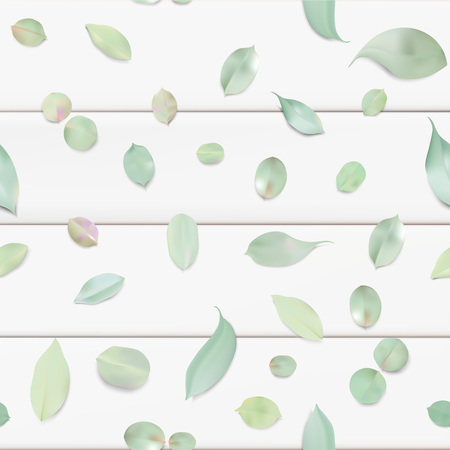Introduction to Biophilic Design in the UK
Biophilic design is swiftly transforming the landscape of British interiors, merging the natural world with the built environment in both residential and commercial spaces. Rooted in the principle that humans have an innate connection to nature, biophilic design seeks to bring the outdoors inside, creating environments that promote health, wellbeing, and sustainability. Across the United Kingdom, this approach has gained significant traction as architects, designers, and homeowners recognise its positive impact on daily living. The British climate and cultural appreciation for green spaces make biophilic design particularly relevant; from urban flats in London to countryside cottages in Yorkshire, integrating natural elements has become a defining trend. More than just an aesthetic movement, biophilic interiors contribute to improved mental clarity, reduced stress levels, and enhanced air quality. This sustainable ethos extends beyond visual appeal—by prioritising renewable materials and eco-friendly practices, biophilic design champions a greener future for British interiors while supporting occupants physical and emotional wellbeing.
2. Defining Sustainable Materials
When designing biophilic British interiors, it is essential to understand what truly defines a sustainable material. In the UK context, sustainability encompasses more than just the initial source of a material—it involves a holistic approach throughout the material’s life cycle, from extraction to disposal or regeneration. Below, we clarify the main criteria that determine whether a material is considered sustainable under British sustainability standards.
Key Characteristics of Sustainable Materials
| Characteristic | Description | Relevance to British Standards |
|---|---|---|
| Renewability | Materials sourced from resources that naturally regenerate within a short time frame. | Timber certified by FSC or PEFC, fast-growing plants like bamboo. |
| Low Carbon Footprint | Production and transportation processes generate minimal greenhouse gas emissions. | Locally sourced stone, recycled glass manufactured in the UK. |
| Responsible Sourcing | Ethical extraction with minimal impact on ecosystems and local communities. | Suppliers adhering to BES 6001 or BREEAM guidelines. |
| Recyclability/Biodegradability | The material can be reused, recycled, or safely returned to nature at end-of-life. | Wool insulation (biodegradable), metals (recyclable) in accordance with WRAP recommendations. |
Applying Sustainability Criteria in Practice
Sustainable materials should be assessed not only for their origin but also for their entire lifecycle performance. For instance, British interior designers often favour reclaimed timber or recycled metals for their proven durability and capacity for reuse. Similarly, natural materials like sheep’s wool—abundant in the UK—offer both biodegradability and excellent thermal performance. Responsible sourcing is paramount; reputable suppliers in Britain provide documentation verifying ethical practices and low-impact harvesting. By prioritising these attributes, biophilic interiors can contribute significantly to reducing environmental impact while promoting occupant well-being.

3. Key Sustainable Materials for British Interiors
When designing biophilic interiors in the UK, selecting eco-friendly materials is essential for both environmental responsibility and long-term durability. British interiors benefit from a range of sustainable materials that not only reduce environmental impact but also offer practical performance and timeless style.
FSC-Certified Timber
Timber certified by the Forest Stewardship Council (FSC) ensures responsible forest management. British oak, ash, and beech are excellent choices, providing warmth and natural texture while supporting sustainable forestry practices. FSC-certified wood is ideal for flooring, panelling, joinery, and furniture within UK homes and commercial spaces.
Reclaimed Bricks
Using reclaimed bricks salvaged from historic buildings or local demolition projects adds unique character to interiors while reducing construction waste. These bricks are particularly suitable for feature walls, fireplaces, and exposed brickwork in period properties or modern renovations across Britain.
Natural Stone
Locally quarried stones such as Welsh slate, Cotswold limestone, or Scottish granite lend authenticity to biophilic designs. Natural stone is durable, low-maintenance, and can be used for flooring, countertops, or accent walls. Its thermal mass also contributes to passive heating in British climates.
Sheep’s Wool Insulation
A traditional British material enjoying renewed popularity, sheep’s wool insulation provides excellent thermal and acoustic performance. It is renewable, biodegradable, and supports local farming communities. This material works well for wall cavities, lofts, and underfloor insulation in both new builds and retrofits.
Recycled Glass
Recycled glass tiles and surfaces introduce colour and light into interiors while making use of post-consumer waste. Suitable for splashbacks, bathroom features, or decorative panels, recycled glass products are increasingly available from UK suppliers committed to sustainable manufacturing.
Locally Sourced Clay
Clay plasters and bricks made from UK clay deposits offer a breathable finish that regulates humidity—ideal for healthy indoor air quality. Traditional clay building methods have deep roots in British construction history and remain relevant today for both restoration work and contemporary interiors seeking natural beauty.
Towards Greener Homes
The careful selection of these key sustainable materials enables designers and homeowners to create interiors that are not only visually pleasing but also environmentally responsible—a vital step towards a greener future for British homes and businesses.
4. Integration of Nature in Interior Spaces
Bringing the outdoors inside is central to biophilic British interiors, especially when thoughtfully combined with sustainable materials. Given the UK’s distinct seasonal light and climate, integrating nature indoors requires practical and climate-conscious approaches that enhance comfort while minimising environmental impact.
Living Walls and Vertical Gardens
Living walls, or vertical gardens, are a striking way to infuse interiors with greenery. These installations not only purify indoor air but also create a dynamic focal point. In the British context, it’s essential to select plant species suited for lower light conditions and fluctuating humidity—ferns, mosses, and ivy thrive particularly well. Opting for recycled support structures and integrated rainwater irrigation further boosts sustainability.
Natural Fibre Flooring Solutions
Flooring choices greatly influence both the look and feel of interior spaces. Sustainable natural fibres such as sisal, seagrass, coir, and wool are popular in British homes for their resilience and tactile warmth underfoot. These materials are renewable, biodegradable, and well-suited to the UK’s often damp climate due to their breathability. Consider using area rugs crafted from British wool for added insulation during colder months.
| Material | Benefits | Best Use in British Homes |
|---|---|---|
| Sisal | Durable, anti-static, biodegradable | High-traffic areas like hallways and stairs |
| Seagrass | Moisture-resistant, easy to clean | Kitchens and conservatories |
| Wool (British) | Naturally insulating, renewable | Bedrooms and lounges |
| Coir | Tough texture, sustainable harvest | Entrance mats and utility rooms |
Botanical Colours Inspired by Nature
Using botanical-inspired colour palettes is another method of evoking nature indoors without compromising on sustainability. Earthy greens, muted browns, soft greys, and sky blues reflect the British countryside and coastal landscapes. Choose paints from eco-friendly brands that avoid harmful VOCs and use natural pigments; these options are particularly important given typical British ventilation patterns which may be limited during wetter or colder seasons.
Sustainable Material Combinations for All Seasons
The integration of nature through sustainable materials should consider year-round usability. Natural stone window sills paired with recycled glass planters make excellent perches for houseplants in winter’s low light. In summer, linen curtains made from organic flax can diffuse bright sunlight while maintaining a fresh atmosphere indoors.
Practical Tips for British Homes:
- Rotate potted plants seasonally to maximise available daylight.
- Select moisture-tolerant flooring in rooms prone to dampness.
- Use naturally dyed textiles for cushions and throws to introduce botanical hues.
- Create small herb gardens on kitchen windowsills using reclaimed wood planters.
Sustainably integrating nature into your home isn’t just about aesthetics; it’s about creating healthy spaces that harmonise with Britain’s unique environment. Thoughtful choices in living elements, materials, and colours ensure your interiors remain both inviting and ecologically responsible all year round.
5. Case Studies: Exemplary British Spaces
Across the UK, the marriage of biophilic design and sustainable materials is reshaping interiors, offering both visual delight and environmental responsibility. Here we showcase notable examples that exemplify the diversity and ingenuity found in British spaces—ranging from contemporary London flats to charming Cotswold cottages.
London Flats: Urban Renewal with a Green Touch
In the heart of London, urban dwellings are embracing biophilic principles by integrating reclaimed timber flooring, natural clay plaster walls, and living plant installations. These flats demonstrate how even compact spaces can benefit from locally sourced oak beams and recycled glass panels, creating interiors that breathe while reducing their carbon footprint. By incorporating green roofs and balcony gardens, residents reconnect with nature without sacrificing metropolitan convenience.
Cotswold Cottages: Heritage Meets Sustainability
Traditional Cotswold cottages serve as prime examples of how historic properties can be sensitively updated with sustainable materials. Lime-based mortars and paints are used for their breathability and low environmental impact, while sheep’s wool insulation provides natural thermal efficiency. Locally quarried stone maintains regional character, and timber windows crafted from FSC-certified wood blend seamlessly into the landscape. These homes embody a harmonious balance between heritage conservation and modern eco-consciousness.
Community Spaces: Biophilia Beyond the Home
Biophilic principles extend beyond private residences into community hubs such as libraries and co-working studios. In Manchester, a renovated library employs cork flooring and modular green wall systems to improve acoustics and indoor air quality. Similarly, an Edinburgh co-working space uses upcycled furnishings alongside expansive skylights to maximise natural light and foster wellbeing among its users.
Takeaway Insights
These case studies highlight that across Britain, sustainable materials are not just an ethical choice but also a practical strategy for enhancing comfort, aesthetics, and connection to nature in everyday life. Whether through innovative urban conversions or sensitive rural renovations, British interiors are leading the way in marrying sustainability with biophilic design principles.
6. Maintenance and Longevity of Sustainable Interiors
Proper care is essential for ensuring that sustainable materials in biophilic British interiors deliver their full potential in both form and function. High-use spaces—whether bustling family kitchens or busy office reception areas—demand a thoughtful approach to upkeep. Regular maintenance not only preserves aesthetic appeal but also extends the lifespan of eco-friendly installations, supporting a circular economy ethos prevalent in modern British design.
Routine Upkeep: The Foundation of Durability
Establishing a consistent cleaning schedule is key. Natural wood, bamboo, and cork flooring should be swept frequently to prevent grit from scratching surfaces. For walls clad in reclaimed timber or lime plaster, gentle dusting with a soft cloth avoids abrasive damage. When it comes to natural textiles like wool or linen upholstery, opt for vacuuming with an upholstery attachment and immediate spot-cleaning using eco-friendly solutions. Avoid harsh chemicals that can break down fibres or strip natural finishes—mild soap and warm water are typically sufficient for most surfaces.
Repairability: Preserving Value Through Timely Intervention
Sustainable materials are often chosen for their inherent repairability—a quality that aligns with the British tradition of “make do and mend.” Where possible, refinish rather than replace. Timber worktops or furniture can be sanded back and re-oiled as needed; loose joints on wooden chairs are best addressed early with non-toxic wood glue. If cracks appear in clay plaster walls, patching with matching earth-based material maintains breathability while restoring integrity. Investing in repair kits specific to your surface (such as beeswax sticks for scratches in wood) keeps ongoing maintenance local and low-impact.
Long-Term Considerations: Planning for Enduring Performance
When specifying sustainable materials during renovations or new builds, choose finishes known for resilience under UK conditions—think hard-wearing British-grown hardwoods like oak or ash, or robust stone quarried locally. Design features such as easily replaceable floor tiles or modular shelving systems mean individual components can be upgraded over time without wholesale replacement. Don’t overlook the importance of environmental controls: maintaining steady indoor humidity helps prevent warping in timber and prolongs the life of natural wall coverings.
Cultivating a Mindset for Sustainable Stewardship
Ultimately, nurturing longevity in biophilic interiors means fostering a culture of stewardship among building users. Provide clear guidance to occupants—whether family members, tenants, or office staff—about which products to use (and avoid) on different surfaces. Encourage reporting of wear-and-tear early so issues can be addressed before they escalate into major repairs.
The British Way: Blending Heritage Skills with Modern Materials
Drawing on a proud legacy of craftsmanship, many British tradespeople are adept at working with traditional materials in contemporary contexts. Seek out local specialists familiar with limework, joinery, or natural insulation to keep repair cycles short and carbon footprints minimal.
By embedding these maintenance principles into daily routines, sustainable interiors remain beautiful, functional, and resilient—delivering both environmental and cultural value for years to come.
7. Future Directions and Resources
As the movement towards sustainable interiors continues to gain traction in the UK, biophilic design is poised to play an even greater role in shaping British homes and commercial spaces. Upcoming trends point towards deeper integration of eco-friendly materials such as reclaimed timbers, natural stone, recycled glass, and innovative composites derived from agricultural waste. Designers are increasingly blending traditional British craftsmanship with cutting-edge green technology, ensuring that interiors remain both culturally authentic and environmentally responsible.
Emerging Trends in Sustainable British Interiors
Looking ahead, expect to see a rise in locally sourced materials that reduce transport emissions and support regional economies. There is growing interest in hempcrete, cork flooring, sheep’s wool insulation, and clay plaster finishes—all celebrated for their low environmental impact and contribution to healthier indoor environments. The popularity of circular economy principles is also increasing, with more designers focusing on reuse, upcycling, and modular systems that allow for easy repair or replacement over time.
Trusted Local Suppliers
For those keen to source sustainable materials within Britain, consider reputable suppliers such as The Reclaimed Flooring Company for salvaged woods; Natural Building Technologies for eco-insulation; Clayworks for natural clay plasters; and Green Building Store for a range of responsibly sourced construction products. For plant-based furnishings and textiles, Bristol Weaving Mill offers locally made options crafted from organic fibres.
Further Resources for Responsible Material Selection
If you’re seeking guidance on best practices and certifications, consult resources like the BREAAM (Building Research Establishment Environmental Assessment Method), Sustainable Interiors Group UK, and the Green Register. These organisations offer advice on sustainable sourcing, material health profiles, and how to ensure your projects align with the latest ecological standards in Britain.
By staying informed about these trends and tapping into local expertise, homeowners and professionals alike can champion biophilic design principles while making choices that benefit both people and planet—ensuring British interiors remain beautiful, functional, and future-ready.


